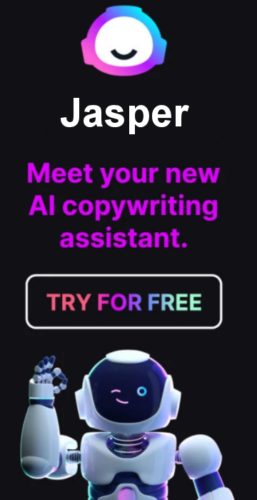Looking back at my apprentice days, I suffered the consequences brought by the common SEO misconceptions.
A lot has been said about web content being the king in today’s tech era. Majority of the mistakes are content-driven, meaning those affect things that are encompassed within a site’s written substance.
1. Getting caught up with high-traffic, highly competitive keywords.
A novice SEO practitioner usually commits this mistake. Back then, I stringently selected high-traffic keywords with immediate success in mind. I was blinded by the massive amounts of traffic it promises. But because my competitors are the more dominant players in the industry, I never managed to at least reach the second page. What I didn’t know was conversion should still be the priority.
What I could’ve done: For one, I should have shied away by choosing lower-traffic phrases that converts better. I could have built momentum from there. Also, utilizing analytics package would have surely helped me. Those would’ve enabled me to compare statistics and keyword trends.
2. Not hitting the “share” button
Blogs, articles, and guest posts are undeniably the best SEO strategies for start-ups. It’s where potent market leads first notice your product/service and make an impression on it. But what made the efforts futile for me? I wasn’t proud of my content.
Back then, I seldom share it on social media platforms (e.g., Facebook, Twitter, and LinkedIn). I was drawn into the thinking that it will only provide me with the littlest amount of page visits. Well, it turned out that those were the much-needed boost I’ve forgone.
Besides the blue button: Nothing beats generating natural likes and follows from your targeted audience. Avoid using tools and hacks that yield short-lived success. I can’t vividly explain the frustration of seeing my 10k likes go down to 3.2k.
3. Utilizing dull anchor texts
There were innumerable times I used generic anchors (e.g., Click Here, Go here, etc.) when I was starting. I even used the keyword “free” to entice visitors. What I didn’t know was that web readers have grown weary of all those spam links, and that the average session duration for those keywords significantly dropped.
Mix it up: Google’s algorithm and web readers, in general, applaud varieties in anchor text distribution. Though branded anchor texts still remain as the top priority, long tail anchors, brand + keyword anchors, and naked link anchors are some viable options to avoid viewing fatigue.
Exact match anchors, in my experience, have brought more damage. Use it sparingly and with caution so as to avoid lost points and penalties from Google.
4. Bombarding it with keywords or keyword stuffing
You might have already raised an eyebrow when I used the term “keyword” twice in this section’s subheading. But this statement that I used as a teaser on my personal blog 5 years ago surely got some mockery.
“So are you a person or individual belonging to a group who looks for a quality content writer? Quality content writers who have the flare, passion, and zest are scarce nowadays. You would want to outsource it to somebody who embodies the ideals of a quality content writer like me.”
What went through my mind is that I can manipulate Google’s search results through it. It made some headway, but it was all downhill after that.
One reason? My page visitors felt like I was shoving my service down their throats, so they immediately left. Again, web visitors are more cognizant of spam sites now. If your page exhibits hints of bad user experience (e.g., higher bounce rate, shorter time on page, less return visitors, etc.) because of annoying, repetitive keywords, then you need to reconsider your content.
5. Unpredictable publishing
A consistent publishing plan takes into account the optimal time to upload content and the appropriate volume. Before, majority of my clients were situated in Western Europe, so I had to consider time zones and other geographical and cultural factors.
One mistake I can consider is posting too much. I had one stretch where I posted 4-5 blog posts per day; when I averaged the chunk traffic those posts collectively got, it was way below what I expected. I realized that each of them competed for attention and the less interesting ones got buried.
Meanwhile, going dry for a week or so without any contribution will do you no good too. It negates any progress you were able to accumulate.
A single published post every other day did the magic for me. Nevertheless, it’s all about consistency.
6. Too much recycling
At a certain point, readers will grow tired of perusing similar content they’ve read over a hundred times. Again, that impacts Google ranking factors if they immediately hit the “back button.”
Of all the mistakes in this list, this one impacted me the least. Why? It’s because I utilized copy-and-improve techniques. The skeleton of my previous blog or informational article may have revolved at an already published idea, but I made sure my personal insights served as its meat. It is through effective paraphrasing and writing that I was able to call it as ‘my own.’
Small SEO Tools, Grammarly, and PlagTracker are three checkers that rate the uniqueness of one’s content. These usually mark texts in quotations as plagiarized, so you may want to revise it a bit if that’s the case.
As a wrap-up, common SEO mistakes such as these can be alleviated with formal training and education. But if your means do not provide for that, there’s no better way than to learn it from online gurus or to join SEO groups for tips. That somehow put me in a good position to write my essay about this topic.
To wit, let me leave you with the finishing statement in TechKnowSys’ article entitled “Why Content is King in SEO.”
"Content truly is king on the Internet. Use it properly, and first-time visitors will become repeat visitors."

About the Author: Joe Baldwin
Joe is a native US resident & professional article writer for bidforwriting.com. He studied English literature and creative writing. He has experience with online web content including blogs, web page content, news, public relations, press releases, and long form sales and industrial presentations.



